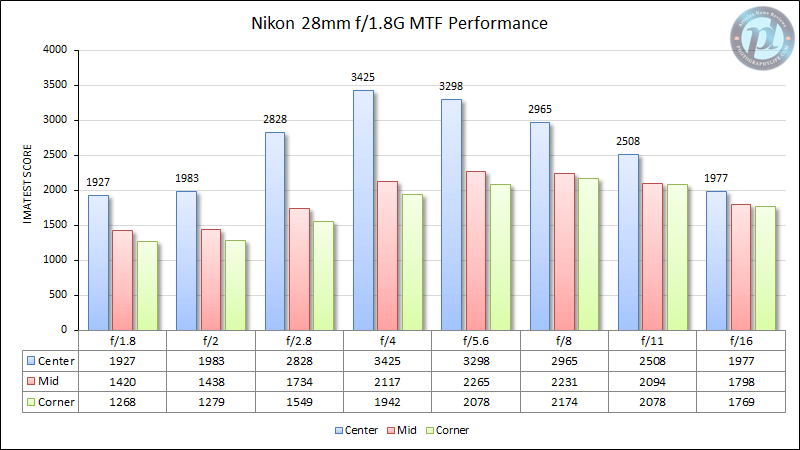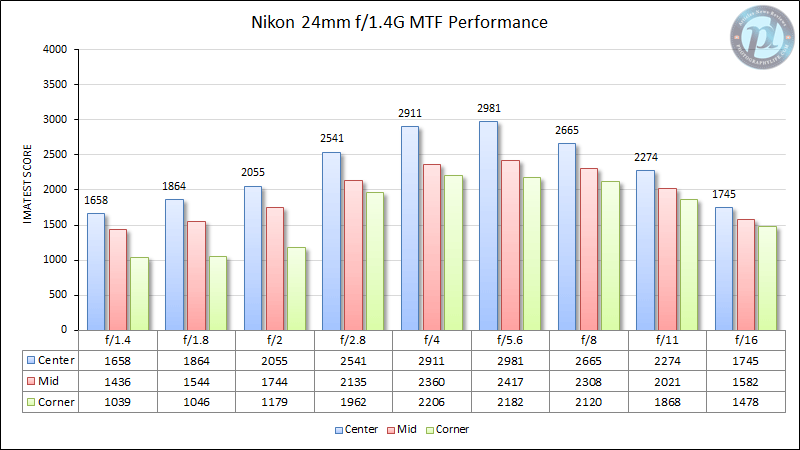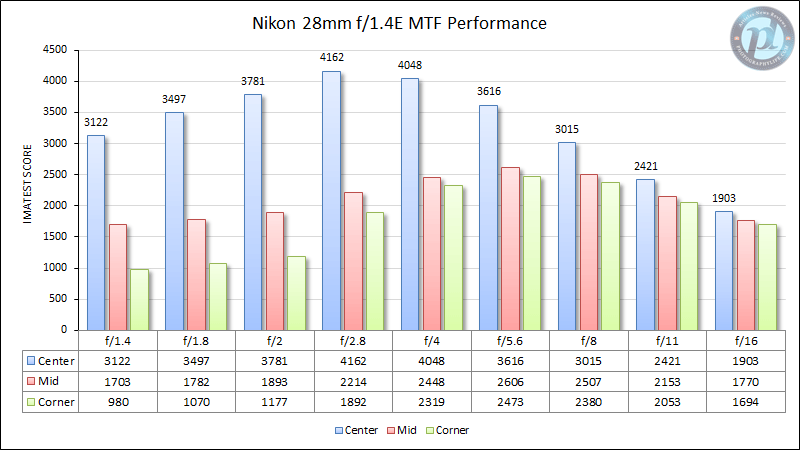Nikon 28mm f/1.8G vs Nikon 24mm f/1.4G
The Nikon 24mm f/1.4G is a high-end lens that many photographers praise, thanks to its optical qualities. Let’s take a look at how it compares to the Nikon 28mm f/1.8G:


Both lenses start out similarly from f/1.8 to the f/2 range, with the 28mm f/1.8G showing slightly better corners. However, once stopped down to f/2.8 and smaller, the Nikon 28mm f/1.8G takes off, especially in the center frame. The Nikon 28mm f/1.8G is a bit weaker stopped down in terms of corner sharpness, but it still shows fairly strong performance.

Nikon 28mm f/1.8G vs Nikon 28mm f/1.4E
Now let’s take a look at how the lens compares to its big brother, the Nikon 28mm f/1.4E:


The difference is pretty obvious – Nikon designed the 28mm f/1.4E to be an absolutely stellar lens and it beats the 28mm f/1.8G in every way, at every aperture. What’s remarkable, is that the sharpness in the center of the frame at its maximum aperture of f/1.4 is better than what the 28mm f/1.8G can do when stopped down! And if you stop the Nikon 28mm f/1.4E down to f/2.8, it yields outstanding sharpness that most other lenses cannot compete with. Nikon did a phenomenal job with the 28mm f/1.4E – it will probably be a benchmark of wide-angle optical performance for many years in the future.

Nikon 28mm f/1.8G vs Sigma 24-35mm f/2 Art
I thought it would be fun to compare the Nikon 28mm f/1.8G to the Sigma 24-35mm f/2 Art at the same focal length:


At f/2, both lenses perform similarly in the center. However, once stopped down to f/2.8, the Sigma 24-35mm f/2 Art takes off with its superb performance across the frame. The Nikon 28mm f/1.8G edges the Sigma out in the center at f/4, but at the expense of corner sharpness. This is certainly a pretty remarkable result for the Sigma, considering that it is a zoom lens.

After seeing what the Sigma 24-35mm f/2 Art is capable of, you might be wondering if Sigma is a better overall choice. Well, if you don’t mind carrying a lens that is almost three times heavier (941 grams vs 330 grams) and bulkier, then by all means go for it. Personally, I would only do that if I had the intent to replace more than one prime lens, since the Sigma 24-35mm f/2 Art could serve as a 24mm, 28mm and 35mm lenses and everything in between!
Table of Contents